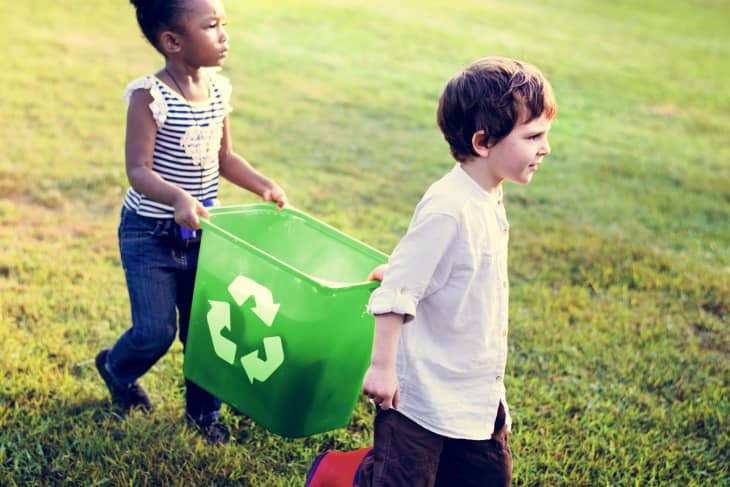Does Recycling Actually Make a Difference?
Everyone knows that person who refuses to recycle because they say it doesn’t actually do anything. Maybe you even are that person. Does recycling actually make a difference to our environment?
We talked to top experts in the recycling space to find out what we can really know about the impact recycling has on our planet.
The Good News About Recycling
Perhaps you’ve heard — or made — the argument that putting more trucks on the road to collect recycled materials, and building the machines necessary to process recyclables so they can be reused, seems like it can’t be good for the environment. Right?
That is a valid question, says Bob Gedert, president of the National Recycling Coalition. “There are many studies out there that have done a life cycle analysis of recycling,” he says, noting that sustainable materials management — or recycling and reusing materials in the most efficient way possible — is a growing field of study in the sustainability world. “These life cycle analyses, material by material, have shown that recycling outpaces landfilling as an environmental practice. Even though you are putting a truck out there to collect it, even though you are putting mechanics out there to process it, you are entirely offsetting that extra activity because you are saving energy by replacing raw materials over and over again.”
How recycling works: Here’s What Actually Happens to a Plastic Container After You Recycle It
So the short answer is that yes, recycling does help the Earth. But that, unfortunately, doesn’t tell the whole story.
The Bad News About Recycling
In full transparency, we will also admit that there is some bad news, much of which revolves around the fact that a lot of the materials we think are being recycled actually aren’t, according to Heidi Sanborn, executive director of the California Product Stewardship Council.
There are multiple reasons this might happen. Say, for example, that a glass container is thrown into the recycling bin but it breaks on the way to its first stop, a materials recovery facility. Then it can no longer be recycled and will be thrown away during the sorting process, says Sanborn. Similarly, if a pizza box comes in with too much food contamination, it ends up in a landfill.
Make sure your recycling is ready to go: The One Thing You Should Always Do Before Recycling Anything
But even when a product isn’t contaminated and is sorted — and perhaps even processed into a material that could potentially be reused — there aren’t always companies interested in buying these recycled materials. This is a problem for low-quality plastics in particular.
“Plastic leaches into food and stuff, where glass doesn’t,” says Sanborn. That results in a lot of companies not wanting to buy recycled plastic.
And while the U.S. used to send a lot of its recycled plastic pellets and flakes to China, for example, China has actually stopped accepting much of it in a “current quality enforcement campaign known as National Sword,” according to Plastics Recycling Update.
“We can keep it clean and sort it and recycle it all day, but it often has nowhere to go,” Sanborn says. “We can’t sell it.”
As a result, much of this plastic ends up in a landfill — even if you recycle it properly.
“The Earth is a marble,” Sanborn says. “Nothing enters or leaves that marble. By doing what we’re doing and creating things that don’t belong in the environment, they escape, and we’re doing damage that we have absolutely no idea how bad it is. You’re opening whales that beached themselves and finding literally 37 pounds of plastic inside of them. They’re now finding plastic fibers from clothes in plankton. It’s coming into the entire food chain. We have no concept of how bad this already is because too much waste has escaped. The question now is: What do we do?”
So, What Do We Do?
The news about plastics sounds dire, yes, and if you’d previously assumed that everything you threw into your recycling bin was getting a second life in a new product, then it may seem depressing to find out that’s not always the case. But these certainly aren’t reasons to stop recycling, say Sanborn and Gedert.
Rather, Sanborn encourages people to minimize their use of resources — plastics in particular — in the first place so there’s less left to recycle (and lower odds that what you do recycle will end up being unusable).
Instead of using a plastic straw, for example, use a paper straw — or no straw at all. Spending money on sustainably produced goods is also a good way to vote with your money.
“I personally go to stores that I know have already done some vetting because it makes it easier on me,” says Sanborn. “Like Whole Foods — they do a pretty darn good job of screening the companies.”
And for the things you do have to get rid of?
Recycling is still a better alternative than sending your waste straight to a landfill.
“Recycling is on the positive side of the carbon footprint equation when you do a materials analysis,” reminds Gedert.
And thanks to evolving research in the field of sustainable materials management, we’re likely to find new and better ways to recycle and reuse materials. “So does recycling make a difference? It’s a very significant yes toward the answer of climate change,” says Gedert.
No recycling pick-up? The Best Way to Find a Recycling Center Near You
